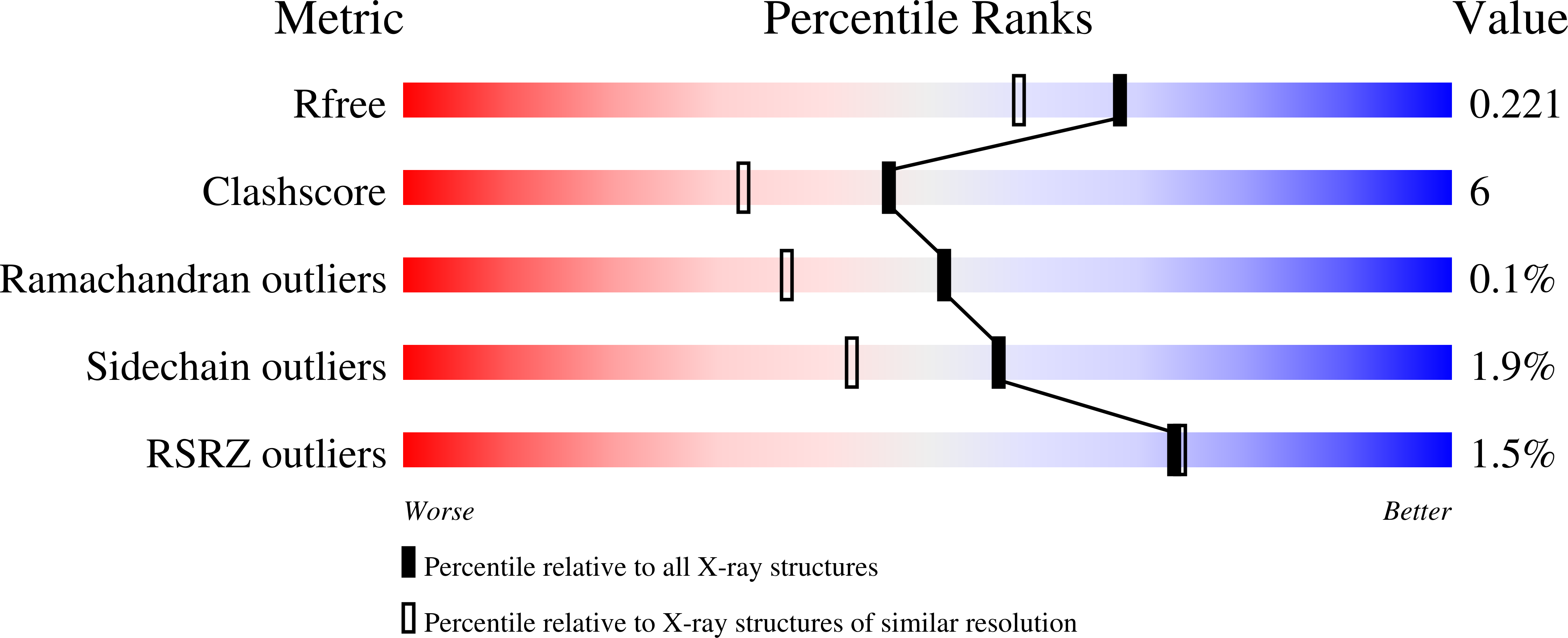Heterotetrameric sarcosine oxidase: structure of a diflavin metalloenzyme at 1.85 a resolution.
Chen, Z.W., Hassan-Abdulah, A., Zhao, G., Jorns, M.S., Mathews, F.S.(2006) J Mol Biol 360: 1000-1018
- PubMed: 16820168
- DOI: https://doi.org/10.1016/j.jmb.2006.05.067
- Primary Citation of Related Structures:
2GAG, 2GAH - PubMed Abstract:
The crystal structure of heterotetrameric sarcosine oxidase (TSOX) from Pseudomonas maltophilia has been determined at 1.85 A resolution. TSOX contains three coenzymes (FAD, FMN and NAD+), four different subunits (alpha, 103 kDa; beta, 44 kDa; gamma, 21 kDa; delta, 11 kDa) and catalyzes the oxidation of sarcosine (N-methylglycine) to yield hydrogen peroxide, glycine and formaldehyde. In the presence of tetrahydrofolate, the oxidation of sarcosine is coupled to the formation of 5,10-methylenetetrahydrofolate. The NAD+ and putative folate binding sites are located in the alpha-subunit. The FAD binding site is in the beta-subunit. FMN is bound at the interface of the alpha and beta-subunits. The FAD and FMN rings are separated by a short segment of the beta-subunit with the closest atoms located 7.4 A apart. Sulfite, an inhibitor of oxygen reduction, is bound at the FMN site. 2-Furoate, a competitive inhibitor with respect to sarcosine, is bound at the FAD site. The sarcosine dehydrogenase and 5,10-methylenetetrahydrofolate synthase sites are 35 A apart but connected by a large internal cavity (approximately 10,000 A3). An unexpected zinc ion, coordinated by three cysteine and one histidine side-chains, is bound to the delta-subunit. The N-terminal half of the alpha subunit of TSOX (alphaA) is closely similar to the FAD-binding domain of glutathione reductase but with NAD+ replacing FAD. The C-terminal half of the alpha subunit of TSOX (alphaB) is similar to the C-terminal half of dimethylglycine oxidase and the T-protein of the glycine cleavage system, proteins that bind tetrahydrofolate. The beta-subunit of TSOX is very similar to monomeric sarcosine oxidase. The gamma-subunit is similar to the C-terminal sub-domain of alpha-TSOX. The delta-subunit shows little similarity with any PDB entry. The alphaA domain/beta-subunit sub-structure of TSOX closely resembles the alphabeta dimer of L-proline dehydrogenase, a heteroctameric protein (alphabeta)4 that shows highest overall similarity to TSOX.
Organizational Affiliation:
Washington University School of Medicine, St. Louis, MO 63110, USA.
























